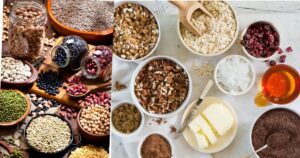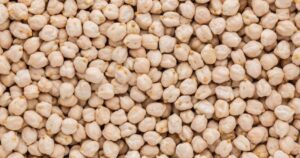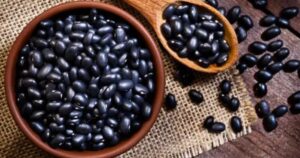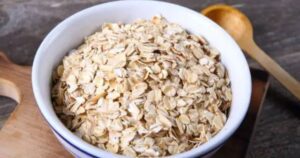15 High Fiber Foods You Should Eat Instead of Supplements

Many Americans rely on fiber supplements to improve digestion or prevent constipation. But what if you could achieve the same benefits naturally — through foods that also nourish your entire body? In this article, you’ll discover 15 high fiber foods that do more than any supplement. These foods rich in fiber help maintain healthy digestion, lower cholesterol, and support long-term wellness without side effects.
Why Natural High Fiber Foods Are Better Than Supplements
While fiber pills or powders seem convenient, they often provide isolated fiber without other essential nutrients. Natural foods, on the other hand, offer a balanced mix of fiber, vitamins, minerals, and antioxidants. According to Harvard Health, fiber from whole foods is linked to better digestion, weight management, and heart health. Supplements may help temporarily, but they can’t replace the benefits of a real, fiber-rich diet.
Common Problem: Many people turn to supplements because they think fiber foods are boring or hard to prepare.
Solution: With the right mix of fruits, vegetables, seeds, and grains, getting enough fiber can be simple, tasty, and enjoyable.
Top 15 High Fiber Foods for a Healthier You
1. Lentils
Lentils are one of the easiest and most affordable natural sources of fiber. One cup of cooked lentils provides over 15 grams of fiber — almost half of your daily need. Lentils also contain iron, folate, and plant-based protein, which make them a powerful food for heart and digestive health.
Problem: Many people avoid lentils because they believe they cause gas or take too long to cook.
Solution: Soak lentils for an hour before cooking, rinse well, and cook them with cumin or ginger — this reduces bloating and adds flavor.

2. Chickpeas
Also known as garbanzo beans, chickpeas are packed with fiber, protein, and essential minerals. One cup of cooked chickpeas provides around 12 grams of fiber. They’re great for controlling appetite and stabilizing blood sugar levels. Adding chickpeas to salads, soups, or even homemade hummus can make your meals more filling.
Problem: Many store-bought chickpea snacks contain too much salt.
Solution: Roast your own chickpeas at home with olive oil and herbs for a healthy, crunchy snack.

3. Black Beans
Black beans are a staple in Latin American cuisine and one of the best foods rich in fiber. One cup offers around 15 grams of fiber along with antioxidants that support heart health. Their soluble fiber helps reduce LDL (bad) cholesterol while improving digestion.
Problem: People often experience bloating after eating beans.
Solution: Rinse canned beans thoroughly and introduce them slowly into your diet to help your body adjust.

4. Oats
Oats are among the most popular high fiber foods for breakfast. Rich in beta-glucan, a soluble fiber, they help lower cholesterol and keep you full longer. Regular oat consumption is also linked to improved blood sugar control (Mayo Clinic).
Problem: Instant oats can be loaded with added sugars.
Solution: Choose steel-cut or rolled oats, add fruits and nuts for flavor, and enjoy a hearty, nutritious breakfast.
5. Chia Seeds
Chia seeds may be tiny, but they’re fiber powerhouses — two tablespoons provide nearly 10 grams. They expand in liquid, forming a gel that supports digestion and helps you feel full. Their omega-3 fatty acids also reduce inflammation and support heart health.
Problem: Some people find chia seeds hard to digest when dry.
Solution: Soak them in water or milk for at least 15 minutes before consuming — this makes them easier to digest and more hydrating.
6. Flaxseeds
Flaxseeds are another excellent natural source of fiber and healthy fats. They support digestive regularity and can even help balance hormones in women. With about 5 grams of fiber per tablespoon, flaxseeds fit easily into smoothies, oats, or baked goods.
Problem: Whole flaxseeds often pass through the body undigested.
Solution: Use ground flaxseeds instead of whole for better nutrient absorption and digestive benefits.
7. Apples
“An apple a day keeps the doctor away” — and fiber is a big reason why. Apples contain pectin, a soluble fiber that promotes good gut bacteria and reduces cholesterol. They’re one of the easiest ways to add fiber to your diet.
Problem: Many people peel apples, removing most of the fiber.
Solution: Wash apples thoroughly and eat them with the skin on for maximum benefit.
8. Pears
Pears are juicy, sweet, and packed with fiber — around 5 grams per medium fruit. Their blend of soluble and insoluble fiber helps prevent constipation and promote regular bowel movements. They also offer antioxidants that protect your cells from damage.
Problem: Overripe pears can lose their crunch and appeal.
Solution: Slice them into salads or oatmeal before they get too soft, or blend them into smoothies for a refreshing drink.
9. Broccoli
Broccoli isn’t just high in fiber; it’s also rich in vitamin C, K, and plant compounds that support detoxification. Regularly eating broccoli improves digestion and supports a healthy colon. A single cup of cooked broccoli provides about 5 grams of fiber and a satisfying crunch.
Problem: Many people dislike broccoli’s strong flavor.
Solution: Roast or sauté it with olive oil, garlic, and lemon for a tasty, mild version that even kids love.
10. Brussels Sprouts
These mini cabbages are a powerful part of a fiber-rich diet. One cup provides about 4 grams of fiber plus antioxidants that fight inflammation. Regular consumption supports healthy digestion and boosts your immune system.
Problem: Overcooked Brussels sprouts can taste bitter.
Solution: Roast them lightly with olive oil and black pepper until crisp — this keeps their natural sweetness intact.
11. Avocados
Avocados stand out because they’re both rich in fiber and healthy fats. One medium avocado provides about 10 grams of fiber — perfect for improving satiety and promoting gut balance. They’re also an excellent source of potassium and folate.
Problem: Many people avoid avocados due to their fat content.
Solution: These are healthy monounsaturated fats — ideal for heart health when eaten in moderation. Spread on toast or add to salads for a creamy boost.
12. Berries (Raspberries, Blackberries, Blueberries)
Berries are among the most antioxidant-rich foods rich in fiber. One cup of raspberries offers 8 grams of fiber and protects against inflammation, heart disease, and aging. They’re naturally sweet, low in calories, and perfect for any meal.
Problem: Fresh berries spoil quickly.
Solution: Store them in the freezer — they retain nutrients and are great for smoothies or oatmeal toppings.
13. Sweet Potatoes
Sweet potatoes are an excellent natural source of fiber and complex carbohydrates. Their soluble fiber helps stabilize blood sugar, while insoluble fiber supports digestion. They’re also rich in beta-carotene for eye and skin health.
Problem: Many people fry them, turning a healthy food into an unhealthy one.
Solution: Bake or roast them with olive oil and herbs to keep the nutrients and fiber intact.
14. Almonds
Almonds are a crunchy, satisfying snack loaded with fiber, protein, and healthy fats. Just one handful provides around 4 grams of fiber. They’re great for reducing cholesterol and maintaining steady energy levels throughout the day.
Problem: Flavored almonds often have added sugar or salt.
Solution: Choose raw or dry-roasted almonds and eat them in moderation for best results.
15. Oat Bran
Oat bran, the outer layer of the oat grain, is a concentrated source of fiber. It helps control cholesterol, supports gut health, and can be easily added to breakfast bowls, muffins, or smoothies. It’s one of the most versatile high fiber foods you can include in your daily diet.
Problem: Some people find its texture too dry.
Solution: Mix oat bran with yogurt, oatmeal, or smoothies to make it more palatable while maintaining its benefits.
Tips for Building a Sustainable Fiber-Rich Diet
- Start slow — increasing fiber too fast can cause bloating.
- Drink at least 8 glasses of water daily to help fiber work effectively.
- Combine both soluble and insoluble fibers for balanced digestion.
- Include more plant-based meals at least three times a week.
- Focus on whole foods — less processed, more natural.
Conclusion: Summary of Key Takeaways
- Natural high fiber foods are more beneficial and safer than fiber supplements.
- They improve digestion, gut health, blood sugar, and cholesterol levels.
- Include a mix of legumes, fruits, vegetables, nuts, and grains for complete nutrition.
- Start with small changes — swap processed snacks for natural sources of fiber.
- Hydrate well and enjoy the journey to better health, one meal at a time.
For more science-backed information about fiber and its benefits, visit NIH Research on Dietary Fiber.
Disclaimer
The information provided in this article is for general educational purposes only and is not intended as a substitute for professional medical advice, diagnosis, or treatment.
While we aim to share reliable, research-backed content about high fiber foods and healthy eating habits, everyone’s body and health needs are different.
Always consult a qualified healthcare professional or a registered dietitian before making major dietary changes, especially if you have existing medical conditions such as
diabetes, heart disease, digestive issues, or food allergies.
Frequently Asked Questions (FAQ):
Q1: How much fiber do I need every day?
A: As a simple rule, aim for about 14 grams of fiber per 1,000 calories you eat. For many adults that means roughly 25–35 grams per day. Exact needs depend on age, sex, and activity level — for example, the general guidance often cited is ~25 g/day for women and ~38 g/day for men.
Q2: Why choose foods high in fiber instead of a fiber supplement?
A: Whole foods deliver fiber plus vitamins, minerals and antioxidants — compounds that supplements lack. Fiber from foods is linked to better digestion, improved blood sugar control, and heart benefits. Supplements may be useful short-term but don’t replace the nutritional complexity of real food.
Q3: What are the best natural sources of fiber to eat daily?
A: Prioritize a mix: legumes (lentils, chickpeas, beans), whole grains (oats, oat bran, brown rice), fruits with skin (apples, pears), vegetables (broccoli, Brussels sprouts), nuts & seeds (chia, flax, almonds) and starchy veg like sweet potatoes. These cover both soluble and insoluble fiber.
Q4: Will I get side effects if I increase fiber intake?
A: Possible short-term issues include bloating, gas, or temporary constipation if you add too much too fast. Solution: increase fiber slowly over 1–2 weeks, drink extra water, and space fiber evenly throughout the day.
Tip: Cooking beans thoroughly or using soaked legumes reduces gas.
Q5: Does fiber help with weight loss and blood sugar control?
A: Yes. Fiber increases fullness, reducing overeating, and soluble fiber slows carbohydrate absorption which helps stabilize blood sugar. Many studies show fiber-rich diets support weight management and better metabolic health.
Q6: What should I look for on food labels to find ‘high fiber’ foods?
A: Look for products with at least 3 g fiber per serving; 5 g+ is excellent. Check the ingredient list for whole grains, bran, beans, seeds, and real fruit or vegetable names (not just “natural flavors”).
Q7: Are there different kinds of fiber and do both matter?
A: Yes — soluble fiber dissolves in water (helps lower cholesterol and control blood sugar) and insoluble fiber adds bulk (helps regularity). Eating a variety of foods ensures you get both types.
Q8: I have a sensitive stomach — how can I safely eat more fiber?
A: Start with cooked or blended options (steamed vegetables, well-cooked lentils, smoothies) and raise intake slowly. Avoid large quantities of raw cruciferous vegetables at once; hydrate well and consider splitting fiber across meals.
Q9: Can fiber prevent or relieve constipation?
A: Often yes. Insoluble fiber helps move stool through the colon while soluble fiber softens stools. Combine fiber with adequate fluids and regular movement for best results.
Q10: Is it okay to rely only on fiber supplements?
A: Supplements can help meet a number, but they miss the extra nutrients and benefits of whole foods. Use supplements only as a temporary aid or under medical advice; prioritize whole-food high fiber foods for lasting health.